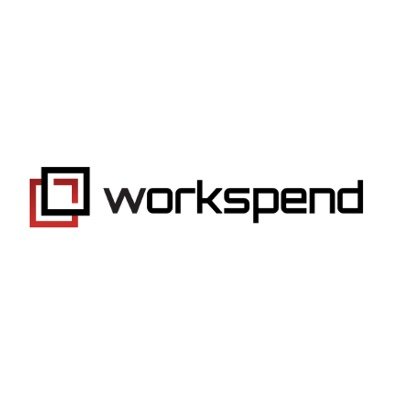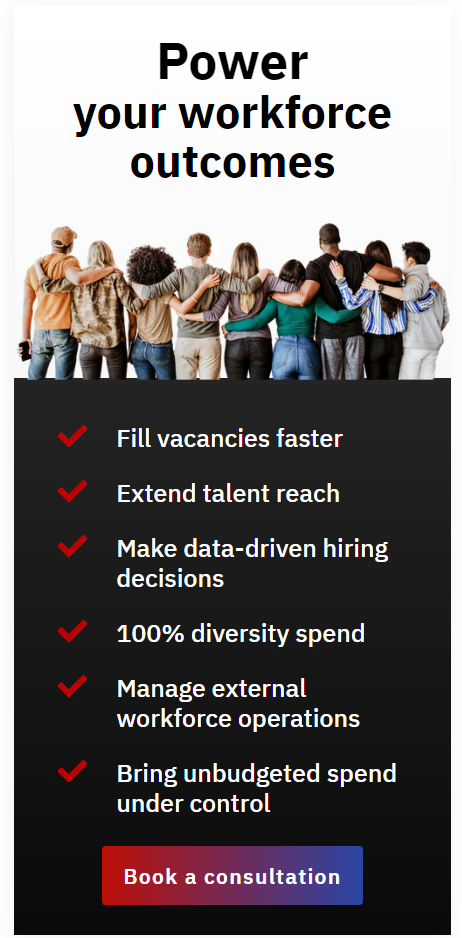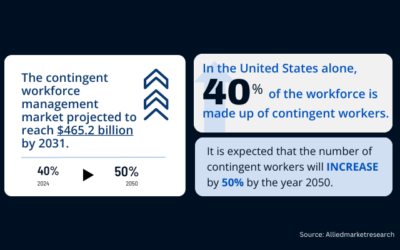Jitin Agarwal - 4.5 min read
Finding the Right Fit
We’ve explored multiple aspects of the contractor lifecycle management journey. First, we considered why evaluating the “shadow labor force” of contractors is crucial to organizations. Next, we considered how to create a successful requisition. This analysis was then followed by how to attract the best candidates for roles.
Now, let’s consider the next step in the contractor management lifecycle: evaluating contractors for the role. Presumably the organization has been successful attracting talented individuals for the role based on the prior article and through partnership with an MSP like Workspend Inc. and our WRAP platform. The organization will likely have any number of applicants for the role; therefore, the topic of this piece is to better understand how to use GenerativeAI (GenAI) technology to facilitate the journey of identifying the right talent to employ within the organization.
Counting What Counts
In Albert Einstein’s words, “Everything that can be counted does not necessarily count; everything that counts cannot necessarily be counted.” Candidly, I don’t think anyone else could have said it any better. As the key organizational stakeholder for the open role, the hiring manager needs to determine the criteria upon which they will base their evaluation.
It may very well be that the organization has a standard set of metrics which are utilized by HR to determine which candidates are fit for a specific role. If this baseline exists, then hiring managers should ensure they use it as appropriate given the context of their role.
It could also be, however, that such a baseline either doesn’t exist, or if it does, it fails to capture the full scope of the role’s requirements. In such a case, the hiring manager is back to square one in determining what they’re looking for in the role. What qualities, attributes, and capabilities will be most likely to ensure success in their function? While no system can necessarily create the full picture of needs for a role, based on current GenAI capabilities and recent advancements, this technology can help develop a framework.
Using this baseline, the hiring manager can make their decision on the criteria that matter most and customize it to meet the role’s specific requirements. To support clients in this endeavor, Workspend’s WRAP platform has leveraged GenAI technology to create a template of assessment criteria based on numerous datapoints.
First, a hiring manager leverages the job description, which was created using WRAP in a prior article. Given the job description is readily available it can be utilized to inform and provide context to GenAI tools.
Next, the hiring manager can provide organizational mission statements, visions, or core principles, all of which may be available from HR or leadership. While these are not required, having them available will increase the value of the assessment recommendations produced by GenAI tools.
Finally, utilizing these elements provided, WRAP is able to create – through back-end GenAI technology – a recommended set of assessment criteria for a role for an organization. As previously noted, these may not necessarily reflect the full set of factors necessary for consideration. The generated assessment may represent roughly 80% of the total criteria, and a hiring manager can use this to further refine to finalize the factors they’ll employ when considering a candidate.
Making a List, Checking it Twice
The late Charlie Munger, of Berkshire Hathaway fame, once said, “No wise pilot, no matter how great his talent and experience, fails to use his checklist.” Much like Charlie’s proverbial pilot, a hiring manager should employ checklists to validate the candidate has the skills they’re looking for in the role.
One approach hiring managers employ to develop their checklists is to group the key factors they’re considering for the role into two buckets. One bucket contains the “hard skills” for the role. This might include the specific technical skills that are necessary for the candidate to do the job. These types of skills might include specific IT languages or industry certifications necessary for the role.
The other bucket is “soft skills”. These might include the more difficult to assess capabilities like collaboration, interpersonal skills, EQ, or other “intangible” factors for an individual.
The great news for hiring managers is the ability to use GenAI tools like WRAP to create these checklists. Based on the information previously provided, like a job description, WRAP is able to help create a set of “checklists” for a hiring manager to better assess candidates. These checklists can take many forms and come in handy when evaluating candidates. For example, some “hard skills” checklists can include technical skills screening platforms like TestGorilla, CodeSignal, or HackerRank, among others. These platforms do an outstanding job of enabling an employer to objectively assess those technical skills which “count” for a role. These services provide this capability better than most organizations can manage internally and they have the benefit of being relatively simple to take advantage of by any organization.
However, as noted above, these types of “hard skills” are not the only thing that counts. There are other “soft skills” that an organization needs to consider when making their hiring decision. These factors can often be more difficult to evaluate, assess and interpret. Fortunately, like hard skills, there are several vendors and platforms available to assist in soft skills assessments , such as: Harver, Wonderlic, and Criteria. Evaluation platforms for both the hard and soft skills of a candidate can be an important part of determining who is the best fit for the role. But they may not represent the full picture of the individual.
Here is where the WRAP generated checklists noted above are useful. During candidate interviews the hiring manager and other key individuals can use the checklists to assess and validate if the candidate has the capabilities they’re looking for as they continue their hiring process. While this may feel a bit like making a list and checking it twice, this approach is likely to provide the most data to successfully assess and find the right candidates.
Discerning the Signal from the Noise
Winston Churchill, during the midst of WW2’s havoc, once famously said, “True genius resides in the capacity for evaluation of uncertain, hazardous, and conflicting information.” So too the hiring manager must now employ their understanding of the hiring process to take the volume of available information about a candidate and make a determination on the true hiring “signal” from all the “noise” of the available data points.
This challenge can be made all the more complicated as some of this information might be very contradictory. One candidate might have done very well on the hard skills assessment but poorly on the soft skills, or another candidate vice versa. Either of these two candidates might represent a challenge for the organization. Those with solid hard skills may be able to get the job “done” but, do so in a way that is organizationally objectionable. The other candidate may be well received by the organization but, struggle to accomplish their core objectives. Meanwhile, another candidate may not have scored as well on either of the two types of assessments, making it even harder to judge which will be the best fit.
Ultimately, this is where partnering with an MSP like Workspend and the WRAP platform reaps the greatest benefits. The WRAP platform offers a set of checklists to help rationalize and validate candidates. Finally, the specialized skills and experience of partnering with an experienced MSP provider helps by guiding and advising the hiring manager so they can make the right hiring decision for the organization. It’s more of an art than a hard GenAI science to find the diamond in the rough. Partner with Workspend to help your organization find the right talent your team needs today.
Upcoming Events
You may also like:
Streamlining Contingent Worker Onboarding: Accelerating Time-to-Productivity
Streamlining Contingent Worker Onboarding: Accelerating Time-to-ProductivityOrganizations are turning to contingent workers to bridge talent gaps and adapt to fluctuating demands. However, the traditional onboarding processes, often designed for permanent hires, are...
AI Should Augment Human Intelligence, Not Replace It
Will smart machines replace human workers? How human intelligence can work with artificial intelligence to produce augmented intelligence.
Reducing Contingent Labor Costs: Strategies for Maximizing Efficiency
Discover how Workspend can help you reduce contingent labor costs and boost efficiency. Gain insights, implement strategic sourcing, optimize workforce planning, and ensure compliance. Partner with us for streamlined solutions. Contact us today!





